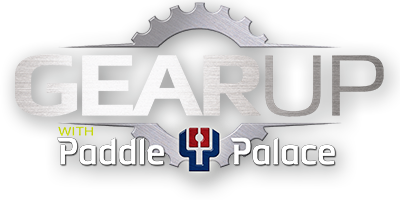Review of the Nittaku 3-Star Premium 40+ Balls by Larry Hodges
Paddle Palace sent me one of the new Nittaku Poly balls, the 3-Star Nittaku Premium 40+, made in Japan.
They are the plastic ones that will replace celluloid balls later this year; this ball is of special interest because it’s likely the ball we’ll be using at the 2014 USA Nationals in December, as well as many other USA tournaments. (There will also be a Nittaku SHA 40+ ball that is made in China but it’s likely the Premium from Japan that will be used at the Nationals.)
The Premium balls will be available in the U.S. in October, there were a few to try out at the U.S. Open in Grand Rapids.
Why is this important to you? Because it’s likely these are the balls you will be using soon. Might as well learn about them and get used to them. I tried the new ball out on a Sunday morning at the Maryland Table Tennis Center, hitting with Raghu Nadmichettu, Derek Nie, Quandou Wang (Crystal Wang’s dad), John Olsen, and Sutanit Tangyingyong. There was pretty much a consensus on it. Here are my findings, based on my play with it and comments from the others.

Larry Hodges reviewed the Nittaku 3-Star Premium 40+ poly ball
Opinions – Larry Hodges
1. The ball sounds almost exactly like a regular celluloid ball – no more cracked sound like many of the previous versions.
2. The ball is extremely sturdy, almost unbreakable. Unlike a celluloid ball, you could press your thumb on it and there was little give. No soft spots. These balls will last forever until someone steps on it.
3. The surface of the ball is slightly rougher than a celluloid ball.
4. It didn’t have the powder that covers a new celluloid ball.
5. It was seamed but you could barely see it.
6. The ball is heavier and slightly wider than the celluloid ones. I think to get rid of the crack sound they made the walls thicker. When you hit with it the extra weight is instantly obvious.
7. I compared it to a 40mm ball, and it looks 40.5mm. That’s why they label it “40+.”
8. It spins slightly less because of the extra weight and greater diameter. All shots initially have less spin – serves, loops, pushes, chops, etc. However, what spin you put on the ball tended to stay, as the extra weight allowed it to better overcome air resistance. At the same time the ball reacted to the spin slightly less, due to the extra weight.
9. It was very easy to serve short with spin with it. I think this was because the extra weight meant the ball came off the racket slower when serving with spin.
10. I did a bounce test, dropping it and a Butterfly 3-star next to each other. The poly ball bounced slightly higher every time.
11. Even though it was technically faster on the bounce test, in rallies it played a touch slower, again presumably because of the extra weight, and because the lower trajectory off the racket (due to the extra weight) made the ball cross the net lower and therefore bounce lower on the other side. One player in backhand-backhand rallies kept putting it in the net.
12. The ball seemed especially heavy when looping, and a bit more difficult to spin. There was less loft – you had to aim slightly higher. Overall I found it a touch harder to loop against blocks, mostly because of the extra effort needed to overcome the extra weight.
13. Counter looping was easier, but the ball definitely felt heavier the more you backed off the table. But balls that might have gone off the end seemed to drop on the table like a rock. This was because even though the ball started with less spin than normal, the spin dissipated less, and so there was as much or more spin at the end than a normal counter loop. However, this was partially offset by the extra weight, meaning the ball reacted slightly less to the spin.
14. It’s very easy to block with it. The ball could bring back the quick-blocking game. But I think blockers with long pips are going to have trouble as the ball won’t return with as much spin. Part of this is because the incoming ball will tend to have less spin.
15. I think hitting is about the same with it. Because there’s less spin it’s easier for a hitter to hit against a loop. But because the ball tended to have a slightly lower trajectory, the ball bounced lower, which might even things out. When an opponent loops close to the table, there’s less spin with this ball than with a celluloid one. But as the looper backs off, the ball tends to come out spinnier since the spin doesn’t dissipate as quickly due to air resistance. (Remember that many players thought going from 38 to 40mm balls would favor hitters, but it was the reverse. And now we’ve gone slightly bigger.)
16. When I first tried chopping, balls that normally would have hit the table kept sailing off. (I’m about a 2100 chopper, though I’m normally an attacker.) There was noticeably less spin. Then I hit with Sutanit Tangyingyong, a 2300+ chopper, and he had no such trouble. His chops were extremely heavy, though he said they’d be heavier with the regular ball. (I struggled to lift and to read his chops, and then realized something – since I primarily coach these days, I haven’t played a seriously good chopper in well over a decade!) He concluded that the ball would favor choppers who vary their spin – his no-spin chop with this ball was deadly – but choppers who rely on heavy backspin wouldn’t do as well. I realized afterwards that part of the reason I had so much trouble with his chopping is that his heavy chops, while starting with less spin, kept the spin due to the ball’s extra weight, and so the balls were heavier than I expected. Also, lifting a heavier ball against heavy backspin is more difficult.
17. My conclusions – the new ball might affect players perhaps the equivalent of 25 ratings points at most. However, that’s a 50-point swing, since one player might be 25 points better, another 25 points worse. (Note that 25 points means more at the higher levels. But at the lower levels, where 25 points doesn’t mean as much, it’ll affect play less as players are less specialized, and so it’ll come out about the same.)
18. The ball is going to help blockers and counterloopers. It’s going to hurt long pips blockers, and looping against blocks. After the difficulty I experienced lifting against chops, I’m starting to think it might help choppers, the most surprising thing I found.

Sean O’Neill: “Really round, others have noticeable wobble; and durable, these are gonna last big time.”
Opinions – Sean O’Neill
This is what five-time U.S. Men’s champion and two-time Olympian Sean O’Neill wrote about the ball:
The Nittaku Premium 40+. Two words – “Game Changer.”
a) Really round, others have noticeable wobble
b) Different matt finish. I don’t think these will get glassy with age
c) Spin doesn’t dissipate. Really true flight paths.
d) Hard as a rock. No soft spots at all. Feels if the walls are thicker than other 40+ e) Sounds good, no hi pitched plastic sound
f) Texture very noticeable. This makes for truer bounce especially on spin shots g) Durable. These things are gonna last big time.




